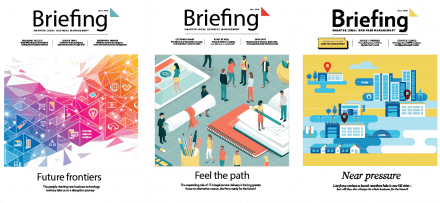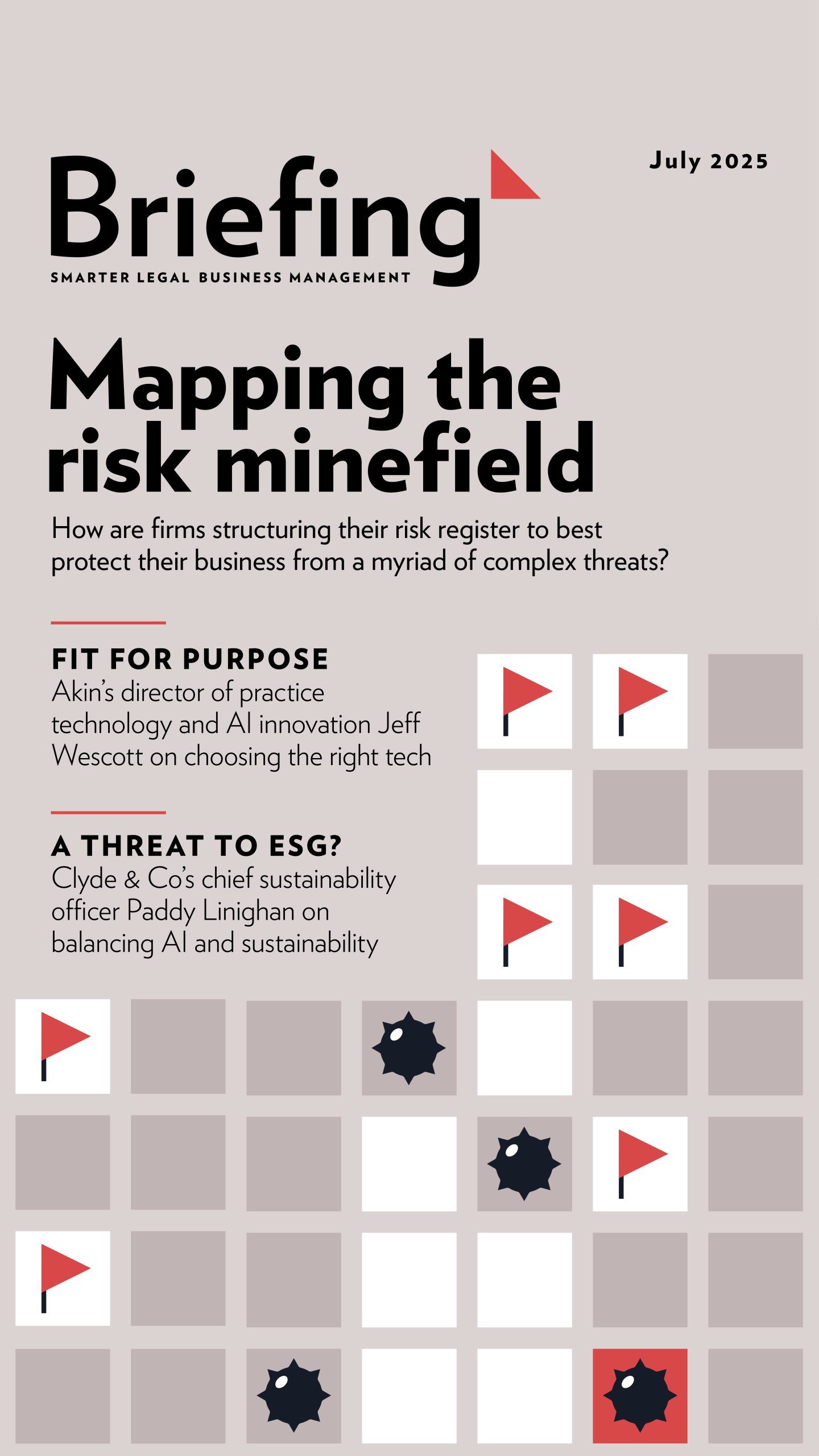AN EYE FOR AI
We all know that AI (artificial intelligence) and machine learning are among the buzzwords that frequently come up in meetings or discussions around innovation and problem solving. It’s also heavily mooted as a key part of proposed requirements by some supply partners.
So, what is AI and how should it be approached to deliver organisational benefits? There are numerous definitions out there, so I’ve tried to take the best of what’s on the web and consolidate it.
• AI is designed to replicate cognitive tasks and/or simulate human intelligence.
• AI is often ‘trained’ for a particular requirement or task.
• AI systems can be defined as weak (narrow AI) or strong (artificial general intelligence), based on their ability to find a solution when presented with unfamiliar tasks and without the need for further human interaction.
We’re probably all using ‘AI’ in areas of our businesses already, without even realising it. Your marketing department is probably using AI-based applications for their online campaigns and social media activity. Many banking applications, in both our personal and business lives, have AI running in the background, and we use machine learning to help improve document production, and workflow and data management.
Only 8% of businesses consider themselves
digitally transformed. There’s still substantial scope to introduce new ways of working and better process automation across all sectors and business areas
And yet, only 8% of businesses consider themselves digitally transformed. There’s still substantial scope to introduce new ways of working and better process automation across all sectors and business areas. Gartner reports that global spend on AI is over $1.2bn (£990m) a year – which is considerable, particularly when you realise that is just a small section of the digital-workspace opportunity. So, where’s it all going?
McKinsey tells us that 45% of all work activities have the potential to be augmented with machine learning and AI – and consumers are receptive to the idea.
And 69% of customers say they would talk to a bot before a human in order to get instant answers – albeit only to a point, with around 67% of customers preferring agent-assisted customer services over a purely self-service model.
Because of the general public’s views around the perceived risks of AI (no doubt driven by Hollywood), there’s been a movement to refer to AI as ‘augmented intelligence’, to more realistically reflect the jobs it can perform. The data science community has also looked to put key principles in place around the design and use of AI tools. These include ethics, shared benefits, privacy and working for the common good. More information can
be found at The Future of Life Institute.
With all this hype, you could be forgiven for thinking we’re all just about to be replaced by robots. The truth is, thankfully, very different. The potential uses for AI in business are still yet to be fully recognised, and wanting to transition to a new way of working and actually delivering it are two very different propositions.
We need to fully engage with our technology partners – but we should do so with a longer-term view, and remember that people-based decisionmaking is still at the heart of how we innovate in business.
I borrow the last word on the subject from Roy Amara, whose adage is often called ‘Amara’s law’: we tend to overestimate the effect of a technology in the short run, and underestimate the effect in the long run.
This article can be found in Briefing’s September edition: Hot data
DIGITAL’S DIVIDENDS
I’m very excited to be writing my first column for Briefing and wanted to start with an area that is very relevant to my customers and management team at this time. I’m sure we are all aware that the process of change can happen more slowly on occasion within the legal sector, and this is probably for good reason. The nature of what you do for your customers, and the necessary management of risk, means a conservative approach with a tried-and-tested model should be the established way forward.
However, it’s also important to keep ahead of the technology curve in the market and remain competitive. That means we need a balanced approach that combines new ways of working and innovation with a good degree of risk control and proper governance. So, how do we do this in the business services sector? The digital journey is unique to each organisation, and can be influenced by sectors or specialisms, but it is essentially a way of gathering digital change management under one capture all umbrella. A digital change programme also has many of the same challenges and constraints we see with other big projects.
I recommend keeping the focus high level, and articulating a clear benefit to the business and the team members. Any project to enable people through technology will require a learning and development element too, so that the change lands positively and is seen as an investment by all team members.
Also, don’t try and do everything at once – pick two or three opportunities to focus your digital roadmap on. You should probably choose areas that will deliver the biggest ROI, and which can be delivered in a timely manner (so, ensuring signoff for the next phase!).
Any project to enable people through technology will require a learning and development element too, so that the change lands positively and is seen as an investment by all team members
Finally, make sure you resource up properly – not just your in-house project team, but also with supply partners. Equal effort from all parties is required to deliver on time and, more importantly, to a budget or savings target. Another thing I find myself discussing more and more with both existing and prospective customers is their need to build careers, rather than offer jobs.
While technology is ever-changing, and creates new opportunities for automation, we can’t get away from how fundamentally important the human factor is to service delivery and good decision-making. Using technology to enhance service delivery or optimise output will, if properly executed, lead to cost efficiencies. My strong recommendation here is to invest some of this benefit back into the team members through better wages, training and development plans.
Service utopia for me is being able to employ highly trained and motivated people who demonstrate real value to the customer’s business. Employees who feel valued are well paid, and with a clear career path they will be highly driven to achieve great things on behalf of business.
In this 24/7 connected working environment, we always seem to be under pressure to reduce budgets, improve service levels, and generally perform alchemy on a daily basis. A structured approach to developing our frontline teams, and helping them perform better through technology-based solutions, is definitely part of the solution to this challenge. It’s also an area where we can build in a continuous improvement cycle, so we can continue to take advantage of further advances in technology.
Technology alone is not the answer to mitigating cost challenges, although combined with a great people strategy it can be.
This article can be found in Briefing’s June magazine: Cash me if you can









